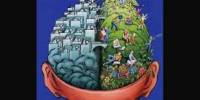A circannual cycle is a biological process that occurs in living beings over the course of a year. It refers to a biological rhythm or cycle that happens about once a year. This phrase is frequently used to describe the annual cycles found in diverse creatures such as animals, plants, and even some microbes. These cycles are often regulated by environmental conditions like as changes in day length, temperature, and food availability.
Ebo Gwinner and Ted Pengelley, a Canadian biologist, were the first to uncover this cycle. It is classed as an Infradian rhythm, which is a biological process with a longer length than a circadian rhythm, but less than one cycle per 24 hours. These processes continue even in artificial environments in which seasonal cues have been removed by scientists.
Circumannual is derived from the Latin words circa, which means roughly, and annual, which refers to one year. Chronobiology is the study of periodic rhythms that arise in living organisms as a result of external stimuli such as photoperiod.
The circannual cycle is frequently related with seasonal behaviors in animals such as migration, hibernation, reproduction, and molting. Many bird species, for example, migrate large distances in response to changes in day length and temperature. Hibernating mammals sleep throughout the winter months when food is scarce and conditions are harsh.
Circadian rhythms in plants can influence processes like flowering and seed germination. Some plants have adapted their life cycles to take advantage of seasonal changes in environmental conditions, ensuring optimal conditions for reproduction and survival.
Animals’ genetic evolution permits them to develop regulatory cycles to improve their fitness, which gives rise to cycles. The improved reproductive success of animals capable of forecasting frequent changes in the environment such as seasonal shifts and adapting to capitalize on the times when success was highest drives evolution for these qualities.
The circannual cycle is related to the circadian rhythm, which is a daily cycle that repeats every 24 hours. Circadian and circannual rhythms are two types of biological clocks that assist organisms in synchronizing their physiological and behavioral processes with the natural cycles of their environment.
The concept of evolved biological clocks appears not only in animal species, but also in plant species that demonstrate cyclic responses in the absence of environmental stimuli. Circadian rhythms are one form of a biological clock, and much research has been done on them and the behaviors they are responsible for in animals.
The precise mechanisms underpinning circannual rhythms varies amongst animals, although they frequently involve the observation of changes in environmental stimuli such as light and temperature, followed by the regulation of hormonal and physiological processes. Many species rely on these cycles for survival and reproduction, allowing them to adjust to the challenges given by seasonal differences in their habitat.
















